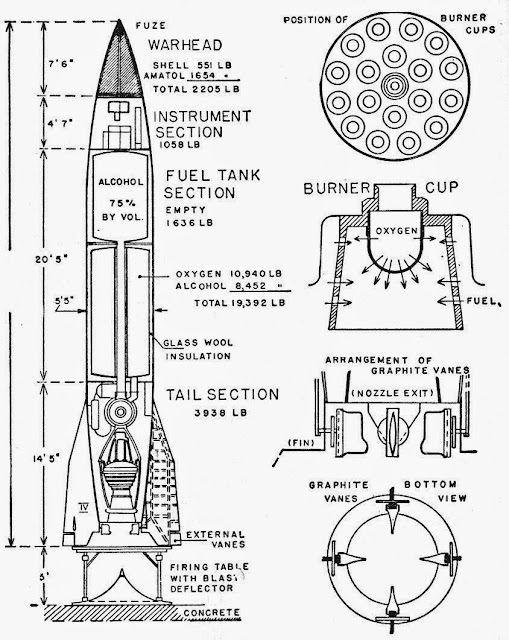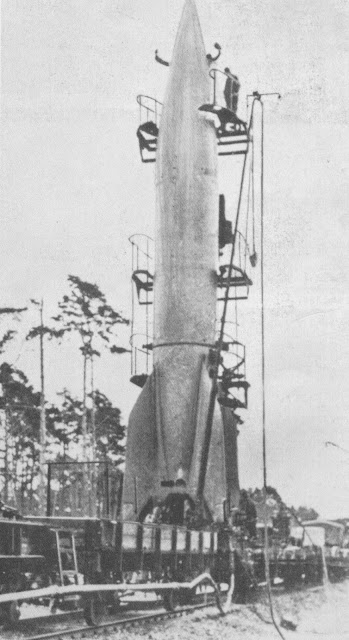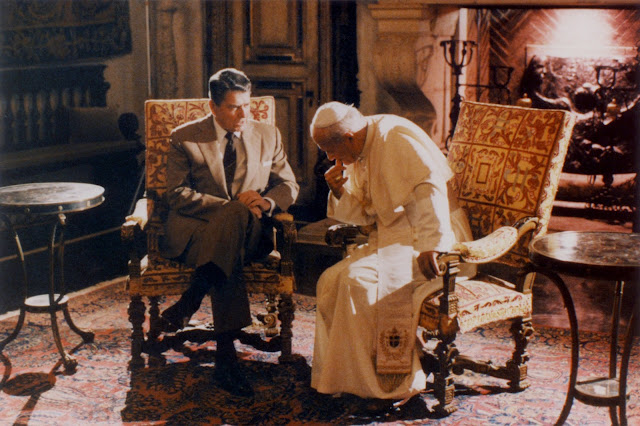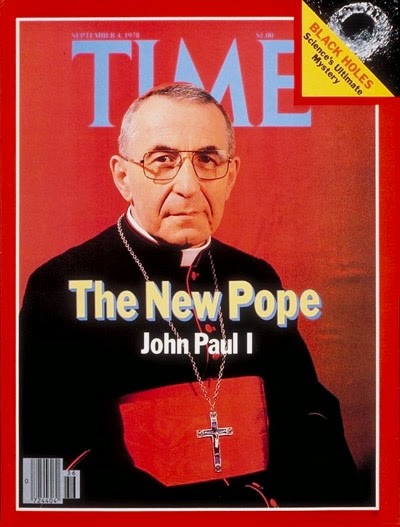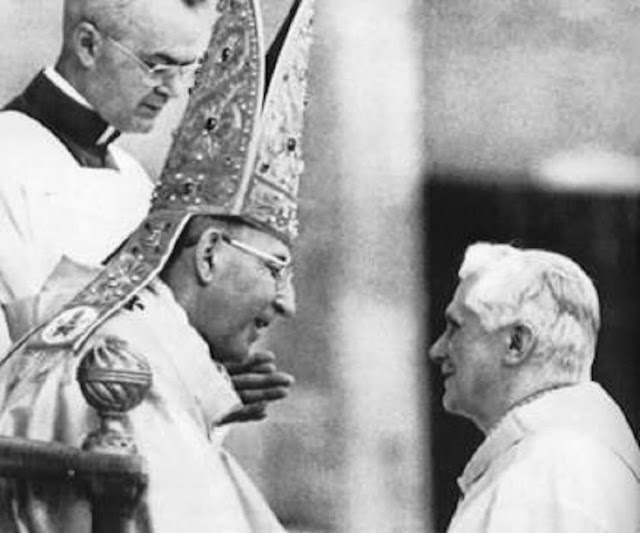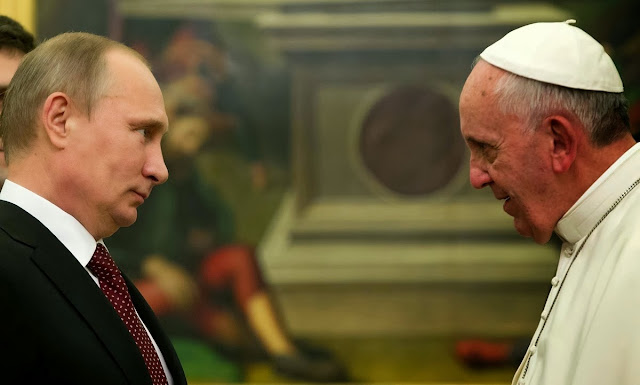Chapter IX - Hungarian Prime Minister, Ferenc Nagy's, Chronological Activities, and Wernher Von Braun.
2. May 28, 1947. Prime Minister Nagy resigns his post from Basal, Switzerland, on the German-Swiss border.164
3. Fall of 1947. Ex-Prime Minister Nagy and family settle on 120 acre farm on outskirts of Herndon, Virginia, twenty-five miles from Washington, D.C., and Nagy becomes agent for any Communist speaking engagements for Division Five of the FBI.165
4. Fall of 1947 to 1951. Nagy covers United States and becomes closely associated with H.L. Hunt of Dallas, Texas.166
5. 1951. Nagy becomes president of Central Eastern European Committee of Refugee Exiles.167
6. 1956 to 1962. Nagy is President and on the Board of Directors of Permindex, a Swiss Corporation, and CMC, Rome, Italy, and commutes between Dallas, Washington, D.C., Herndon, Virginia, Switzerland and Italy.168
7. Spring 1963. Nagy settles in Dallas, Texas with offices in the 600 block of Fort Worth Avenue, ten blocks west of the Dallas School Book Depository Building. He is associated in the 600 block of Fort Worth Avenue in Dallas with Ralph Paul, C.A. "Pappy" Dolsen, Jack Ruby, and Sergio Arcacha Smith, the first two named being close business associates of Jack Ruby. Nagy's relatives make their residence at 1024 Magellan Circle Apartment D, right next door to Sylvia Odio's abode who was visited by the two Cubans and William Seymour on or about September 28, 1963. The 600 block address of Ferenc Nagy is three blocks from the Fort Worth Avenue address of Dal-Land Memorials, where Penn Jones reports the person impersonating Lee Oswald left clothing shortly prior to the assassination. The 600 block of Fort Worth Avenue is seven blocks west of the City Lincoln Mercury plant where a person impersonating Oswald tried to buy an automobile and made statements which could later be used to incriminate Oswald some few days before November 22, 1963.169
Then on November 22, 1963, Ferenc Nagy appears in more than thirty-five photographs at the site of the assassination. He is shown with an open umbrella at a point to the right of President Kennedy's car at Dealey Plaza. After the President's car passed within a few feet of Nagy, he suddenly closed his umbrella and the last and fatal shots were fired.
He is depicted in pictures after the shots with his umbrella folded and then departing the area.170
Nagy is easily recognizable in a number of the photos taken by bystanders. Nagy's forward area of cranium is fully bald while the back one-fourth portion is covered and the hair is combed across the back section of his head.
Nagy, the former Prime Minister of Hungary, President of Permindex and upper echelon boss of Division Five of the FBI, along with Clay Shaw of New Orleans and L.M. Bloomfield of Montreal, Canada carried out his assignment in Dallas with dispatch, but he had his picture taken in the process.
From 1932 until 1945 Wernher Von Braun was Adolph Hitler's most dedicated Nazi rocket scientist. As a matter of fact, given a few more months time, Von Braun's "buzz bomb" and V-2 rocket in 1945 could have turned the tide and forced the Allies to seek something less than total victory over the Third Reich. The enthusiastic Nazi, Von Braun's V-2 rocket had killed thousands and thousands of British Isle residents, and the sound of the approach of the V-2 was terrorizing the entire English countryside.
In 1945, as the Russians were approaching Von Braun's rocket headquarters, he and one hundred and fifteen other of his Nazi rocket scientists escaped with valuable papers and traveled west in Germany until they could turn themselves in to the Allied armies on the West. Later the same year, Von Braun and the 115 other German scientists were removed to Fort Bliss, Texas, where they remained until 1950. In 1950, Von Braun and the others were moved on the the old Redstone Arsenal in Huntsville, Alabama, where they remain to this date.
Von Braun, immediately upon arriving in the United States, made close personal friends with J. Edgar Hoover and Lyndon B. Johnson; and the relationship remained close with Von Braun working with Hoover in security in the Tennessee Valley Authority and the Redstone Arsenal; and later, beginning in 1958, they worked together in the security of the National Space Agency.
1958 was the year that Lyndon Johnson, as Majority Leader of the Senate, helped to push through the National Space Act and later, when he became Vice-President, he was made chairman of the National Space Committee.
Ferenc Nagy, ex-Hungarian Prime Minister, and Albert Alexander Osborne, alias John H. Bowen, the overseer of the assassins in Mexico, both reported consistently to the Muscle Shoals, Huntsville, Alabama area; and there is substantial evidence their contact in this area was Wernher Von Braun.171
Another of the Nazi space scientists who worked with the Cabal was Walter Dornberger. He had been the commanding officer of Wernher Von Braun while both were working for Adolph Hitler's rocket program. During the time period involved, Walter Dornberger was a directing officer in the Bell Aerospace Corporation along with Fred Korth. The former Nazi rocket officer was directly in charge of the assignment of Michael Paine to Bell Helicopter Corporation, a subsidiary in Fort Worth, Texas.
Paine's assignment was to provide a place for Marina Oswald during the approximate eight months prior to November 22, 1963. He provided for Marina to live with his wife, Ruth, in Irving Texas. Ray Krystinik testified to the Warren Commission that Michael Paine, immediately after Lee Oswald was captured at the theater, said, "The stupid ________, he was not even supposed to have a gun."
Von Braun first met Clay Shaw in 1945 when he, Walter Dornberger and about 150 other Nazi rocket scientists abandoned Peenemunde and traveled south to join the American forces in Germany close to the French border. The Nazis were brought to the Deputy Chief of Staff's headquarters where Major Clay Shaw was aide-de-camp to General Charles O. Thrasher, Deputy Chief, European Theatre of Operations. Von Braun, Dornberger, and Shaw maintained the relationship over the years through their mutual connection with the Defense Industrial Security Command, an operational arm of the counter-espionage division of the FBI.172
Ordnance Colonel Holgar N. Toftoy was in charge of the Nazi scientists, and Clay Shaw in the European Command section gave firm assistance to the transfer of 127 of them to the United States after they had spent about five months with the command in Europe.173
In the transfer of the Nazi rocket scientists, the services of Adolph Hitler's intelligence agency was used extensively, and Shaw, Von Braun, Dornberger and the others began a very close association with the Nazi agency and its commander.
The Bundesnachrichtendienst, better known as the Federal Intelligence Agency, or FIA, is largely dependent on the CIA, which subsidizes and controls it. The director in 1963 was Reinhard Gehlen, a former ex-Nazi Colonel 'recuperated' in August 1945 by Allen Dulles, who at the time headed the OSS in Switzerland and was in charge of American intelligence activities in occupied Germany.
The Solidarists and Gehlen had conceived the idea of the "Vlassov Army" which were Russian anti-communist troops, and Gehlen was given the responsibility for the underground that continued to operate behind Communist lines until 1950. In Poland, Gehlen's guerillas on March 28, 1947 murdered General Karol Swierczenski, Vice-Minister of Defense, who, under the name of Walter, had commanded the 14th International Brigade in Spain, and who served as the model for one of the characters in Hemingway's For Whom the Bell Tolls.
Gehlen developed his network under the cover of a firm known as the "Economic Association for the Development of South Germany". He employed former members of the Gestapo such as Boemel-Burg, his intelligence chief in Berlin, and Franz Alfred Six, former SS General and one of Eichmann's subordinates, who was put in charge of Gehlen's contacts in Western Europe.
With the aid of other highly-qualified specialists, Gehlen successfully infiltrated East Germany and the Eastern European states, uncovered Soviet intelligence rings, planted agents among groups of expatriate workers, and took charge of the refugee organizations. He worked for the CIA, Solidarists, and J. Edgar Hoover.
After two years of intense and extensive investigation, Jim Garrison made a well-recorded public statement showing beyond doubt that the had traced the Nazi rocket scientists, the World Trade Center and Permindex, the Fascist Solidarists, American Council of Christian Churches, Free Cuba Committee, the gambling syndicate and Mafia, and NASA's Security Division into its umbrella controlling organization, the Defense Industrial Security Command of Columbus, Ohio and Huntsville, Alabama.
Garrison; had traced DISC into its larger umbrella, Division Five of the .i.FBI and the Defense Intelligence Agency supervised by the Joint Chiefs of Staff in the Pentagon. Here is how Garrison's statement came about. On October 31, 1968, Jim Garrison subpoenaed a Tacoma, Washington man for questioning in his continuing investigation of the John F. Kennedy assassination.
Fred Lee Crismon, a "bishop" of the Universal Life Church, was called to appear before the Orleans Parish Grand Jury on November 21, 1968. Garrison's office said that Crismon "has been engaged in undercover activity for a part of the industrial warfare complex for years. His cover is that of a 'preacher' and a 'person engaged in work to help the Gypsies.'"
Garrison's statement continued, "Our information indicates that since the early sixties, Crismon has made many trips to the New Orleans and Dallas areas in connection with his undercover work. He is a 'former' employee of the Boeing Aircraft Company in the sense that one defendant in the case is a 'former' employee of the Lockheed Aircraft Company in Los Angeles. In intelligence terminology, this ordinarily means that the connection still exists, but that the 'former employee' has moved into an underground operation."
Garrison said that evidence has been developed indicating a relationship between Crismon and "persons involved in the assassination of President John F. Kennedy."
Garrison further reiterated the general findings of his controversial investigation. "President Kennedy was murdered by elements of the industrial warfare complex working in concert with individuals in the United States Government. At the time of his murder, President Kennedy was working to end the Cold War.
The annual income of the defense industry was well over twenty billion dollars a year, and there were forces in that industry and in the U.S. Government which opposed the ending of the Cold War."
As has been pointed out earlier, Fred Lee Crismon used the alias John Howard Bowen and traveled and worked with the Mexico based assassins, Albert Osborne, Thomas Beckham and others. Bowen, alias Crismon, and Becham are shown in photographs taken November 22, 1963. In the picture on page 48, they are shown being taken after arrest by Dallas police across Dealey Plaza immediately after the President's murder.
Fred Lee Crismon, alias John H. Bowen, alias Dr. Jon Gold, and his partner, Thomas Edward Beckham, and Albert Osborne were all working for the Defense Industrial Security Command through the American Council of Christian Churches.
Garrison also revealed that the Grand Jury records confirmed Johnson's part when he said, "Who had the most to gain from the murder? Answer - Lyndon Johnson."
Crismon, alias John H. Bowen, and Beckham played only small roles in the big picture, but not Jack Ruby and Ferenc Nagy. Jack Ruby, agent for DISC through the Mafia and Syndicate had to be in the basement of Dallas City Hall two days after the assassination to dispose of a dangerous witness.
Ferenc Nagy, fellow director of Permindex and the World Trade Center, with Clay Shaw under L.M. Bloomfield, was also in the Dallas City Hall basement the morning of November 24, 1963. Buford Lee Beaty, a city detective, said Captain Tabbert "requested him to watch a man of obvious Hungarian origin who allegedly was in the basement to secure the release of two of his employees."174 Beaty and other policemen have confided to friends that the Hungarian was a former high official and was highly suspect on the morning of the 24th.
About five years after that memorable morning, a few American publications uncovered the fact that the Defense Industrial Security Command was employing agents provocateur.
These are the historic agents used over the centuries by despots to foment division among the population in order to give the government the people's support in suppressing an unpopular segment of the country involved. Provoking agents are also used effectively in creating a munitions market.
The New York Times reported in 1968 that Stokely Carmichael and Rap Brown were Federal agents provocateur. Other media named Eldridge Cleaver and a number of other trouble makers as provocative agents of the FBI. Such reports were not confirmed, but they do make interesting food for thought.
Chapter X - Tryall Club in Jamaica and World Commerce Corporation Successor to the German Munitions Cartels.
The genesis of the munitions cartels is found in the following quotations from H. Montgomery Hyde's book, Room 3603. Hyde's book is a biography of the experience of Sir William Stephenson during and after World War II. Stephenson was head of British Intelligence in the United States during World War II. Here is what Hyde had to say:175
(In 1946) Stephenson had gone to live in Jamaica, where he had bought a property at Hillowton, overlooking Montego Bay - "the finest house in the island," he called it. (Incidentally, it was his wife's choice). His example was followed by several of his friends, including Lord Beaverbrook, Sir William Wiseman, Noel Coward and Ian Fleming, all of whom acquired estates on Jamaica's beautiful north shore at this time. For a year or so he showed little interest in the outside world and was content to enjoy life on this island in the sun. Only gradually did he recover his interest in commerce and industry. With some of his war-time associates, such as financiers Sir Rex Benson and Sir Charles Hambro in London, General Donovan in Washington, and a number of Canadian and American industrialists like Edward Stettinius, former chairman of the U.S. Steel Corporation, he formed the British-American-Canadian Corporation, which developed into the World Commerce Corporation, originally designed to fill the void left by the break-up of the big German cartels which Stephenson himself had done much to destroy. Thus he and his colleagues on the board raised an initial $1,000,000 to help 'bridge over the breakdown in foreign exchange and provide the tools, machinery and "know how" to develop untapped resources in different parts of the world'."
The World Commerce Corporation also played a useful part in the development and rehabilitation of economically backward countries. As one American newspaper editorial put it at the time, "if there were several World Commerce Corporations, there would be no need for a Marshall Plan". Barter trade was facilitated on a massive scale. A typical transaction took place in the Balkans in 1951. Yugoslavia and Bulgaria were short of dollars and also short of medicinal drugs. But each country had about $300,000 worth of paprika on its farms. World Commerce accordingly exchanged a year's supply of penicillin and sulfa for the paprika, which they then sold on other markets. While normally working on a commission basis, the Corporation would sometimes forgo its profit if it felt it could help an impoverished or economically backward country by giving it the facilities of its international connections."
The North Jamaican Hillowton property was later transformed to Tryall, the exclusive club of John Connally, Paul Raigorodsky and many others of the cabal.
World Commerce Corporation received funds from the U.S. International Cooperation Agency and worked closely with Clay Shaw's World Trade Development Commission and Permindex's various World Trade Centers.
George DeMohrenschildt, William Dalsell and a number of the White Russians had worked for I.C.A. for a number of years. This increased DeMohrenschildt's knowledge of the subject of who was behind the conspiracy.
The following from Volume XXIV, page 642 of the official Commission evidence is especially interesting since Albert Osborne and Gordon Novel had been reported at Tryall, Jamaica on a number of occasions.
Ylario Rojas continued as follows:
The latter part of December, 1962, the Cuban visited him in Guadalajara, gave him 900 pesos ($72 U.S.), and on the instructions of the Cuban, he proceeded to Cozumel by bus, arriving there shortly after Christmas, 1962. In Cozumel, ROJAS was met by two Cubans, whose names he could not recall, and also by a Cuban woman whose first name was CRISTINA. Although he could not recall the names of the Cubans, he claimed to have them written in a notebook which he lift with DANIEL SOLIS, a municipal policeman in Cozumel, and he affirmed SOLIS would not deliver the notebook to anyone but him.
About December 20, 1962, .OSWALD; arrived in Cozumel, having proceeded there from Jamaica via Compania Mexicana de Aviation (CMA) Airlines. OSWALD, the three Cubans, and ROJAS discussed the introduction of Cuban propaganda into Mexico. During the time of these discussions, OSWALD; and the three Cubans stayed at the Hotel Playa in Cozumel and ROJAS resided at the home of DANIEL SOLIS. OSWALD; remained in Cozumel for two or three days and returned to Jamaica by air, and ROJAS and the three Cubans remained in Cozumel until about February 15, 1963, when OSWALD; again appeared in Cozumel from Jamaica and on this occasion stayed three days. The day following OSWALD'S arrival, an American by the name of ALBERT arrived from Jamaica.
ROJAS claimed the Cuban woman, CRISTINA, told him that she, the other two Cubans, OSWALD; and ALBERT had discussed the elimination of President KENNEDY. According to ROJAS, she stated OSWALD; was in favor of killing President KENNEDY, but ALBERT and the Cubans did not agree with SWALD;. ROJAS was told by CRISTINA that OSWALD; had stated to the Cubans that he and ALBERT had laid plans to eliminate the President. ALBERT had stayed at the Hotel Isleno in Cozumel and returned to the United States via Jamaica the day after his arrival in Cozumel.
ROJAS claimed to have stayed in Cozumel until early March, 1963, when he returned by bus to Guadalajara.
The officials investigating for the Commission pressured Rojas until he recanted his story. However this action on the part of the investigators is not reliable in that a large amount of hanky panky was going on in the Mexican part of the inquiry.
Some of this is reflected in Volume XIV beginning on page 621:
On March 31, 1964, GILBERTO LOZANO GUIZAR, manager of the Mexico City terminal of the Transportes Frontera bus company, Calle Buenavista No. 7, Mexico, D.F., emphatically advised that the original passenger list of manifest relating to departure No. 2 of bus No. 340 on October 2, 1963, of the Transportes Frontera bus company, is an authentic record of data pertaining to that particular trip.. . . . .At another point the report goes on:
He advised that officers of the Presidential Staff appeared at the bus terminal shortly after the assassination of President KENNEDY, seeking to review passenger lists of the bus company for early October, 1963, and it was found at that time that the completed block of forms for most of the month of October, 1963, which included the above described passenger list, was still in the baggage room at the terminal prior to being discarded. He stated he had torn the October 2, 1963 manifest from the block of forms and furnished it to one of the officers. LOZANO advised that one Lieutenant ARTURO BOSCH, an investigator of the Presidential Staff, had reviewed the above manifest.
LOZANO expressed the opinion that ARTURO BOSCH had filled in the blanks in ink at the top of the form as to the time, destination, trip number, bus number, and date, and had crossed out the date 'November 1', replacing it with the notation 'October 2' which appeared on the manifest. . .
LOZANO stated the hand-printed notation appearing at the bottom of the manifest, 'Driver, DIONISIO REYNA, FCO. SAUCEDO,' was also filled in by BOSCH.
LOZANO advised that there definitely was only one section of bus No. 340 which departed Mexico City at 1:00 pm on October 2, 1963, en route to Monterrey, Mexico, and Nuevo Laredo, Mexico. He explained that the notation 'Departure 2' appearing on the top of the manifest, which he believed BOSCH had filled out, merely indicated the second departure of a Transportes Frontera bus on that particular day, October 2, 1963. The first departure of one of their buses on that day from the Mexico City terminal occurred at 9:00 am with the terminal point being Monterrey, Mexico. He stated the second departure of a Transportes Frontera bus from the Mexico City terminal on October 2, 1963, was the departure at 1:00 pm with the terminal point being Nuevo Laredo, Mexico, and the passengers on this bus were recorded on the above-mentioned manifest of October 2,1963. He stated there were three other departures on that day from the Mexico City terminal, the third departure having occurred at 3:30 pm with the terminal point being Matamoros, Tamaulipas, Mexico; the fourth departure having occurred at 9:00 pm with terminal point at Nuevo Laredo; and the fifth departure at 10:00 pm with terminal point being Cuidad Juarez, Chihuahua, Mexico. LOZANO advised the only bus operating on their line which would have arrived at Nuevo Laredo between the hours of 12:00 am and 8:00 am on October 3, 1963, is bus No. 340, which departed from the Mexico City terminal at 1:00 pm on October 2, 1963.
He (ALEJANDRO SAUCEDO) recalled that shortly after the assassination of President JOHN F. KENNEDY two investigators, whom he described as being with the "Policia Federal Judicial" (Federal Judicial Police), appeared at the Flecha Roja terminal, Mexico, D.F., and requested the original passenger list of bus No. 516 of September 26, 1963, for review. SAUCEDO remembered that the two investigators examined the passenger lists, filed by dates, in a storeroom at the offices of the Flecha Roja bus terminal and found the original copy for the pertinent date and borrowed same. He could not recall the names of the investigators or the exact date they appeared at the office.SIC TRANSIT GLORIA.
SAUCEDO now recalled clearly that these two investigators, whom he could only describe as being "in their thirties," had the duplicate copy of the passenger list which apparently had been at the Flecha Roja bus terminal office in Nuevo Laredo when the trip for September 26, 1963, began.
The investigators stated they wanted the original list because the duplicated copy was not completely legible.
SAUCEDO stated they had the original and duplicate copy of the passenger manifest for Flecha Roja bus No. 516 for September 26, 1963, when they left.
SAUCEDO stated the investigators did exhibit to him government credentials, agency not recalled, and advised they were interested only in finding the passenger list for the incoming trip of bus No. 516 on September 26, 1963. When SAUCEDO asked them if they were interested in locating a departure trip, they stated they were not, explaining they had just been at the bus terminal of Transportes Frontera in Mexico, D.F., where They had located the passenger list for L. H. OSWALD'S departure from Mexico. . . . . .
During this search and review, an untied, loose bundle dated October 5, 1963, was located thrown aside in a cardboard box on the floor of the storage room outside the bin area. This bundle was reviewed and found to include passenger lists for dates September 21, 1963 to October 5, 1963, but no passenger list for bus No. 516 for September 26, 1963 was found.
The information hereinunder was furnished by T-13:
On March 24, 1963, Captain FERNANDO GUTIERREZ BARRIOS, Assistant Director of the Mexican Federal Security Police (DFS), advised that his agency had conduced no investigation in connection with the travel in Mexico of LEE HARVEY OSWALD; and did not have in its possession any passenger lists from any bus lines . . . . . 176
